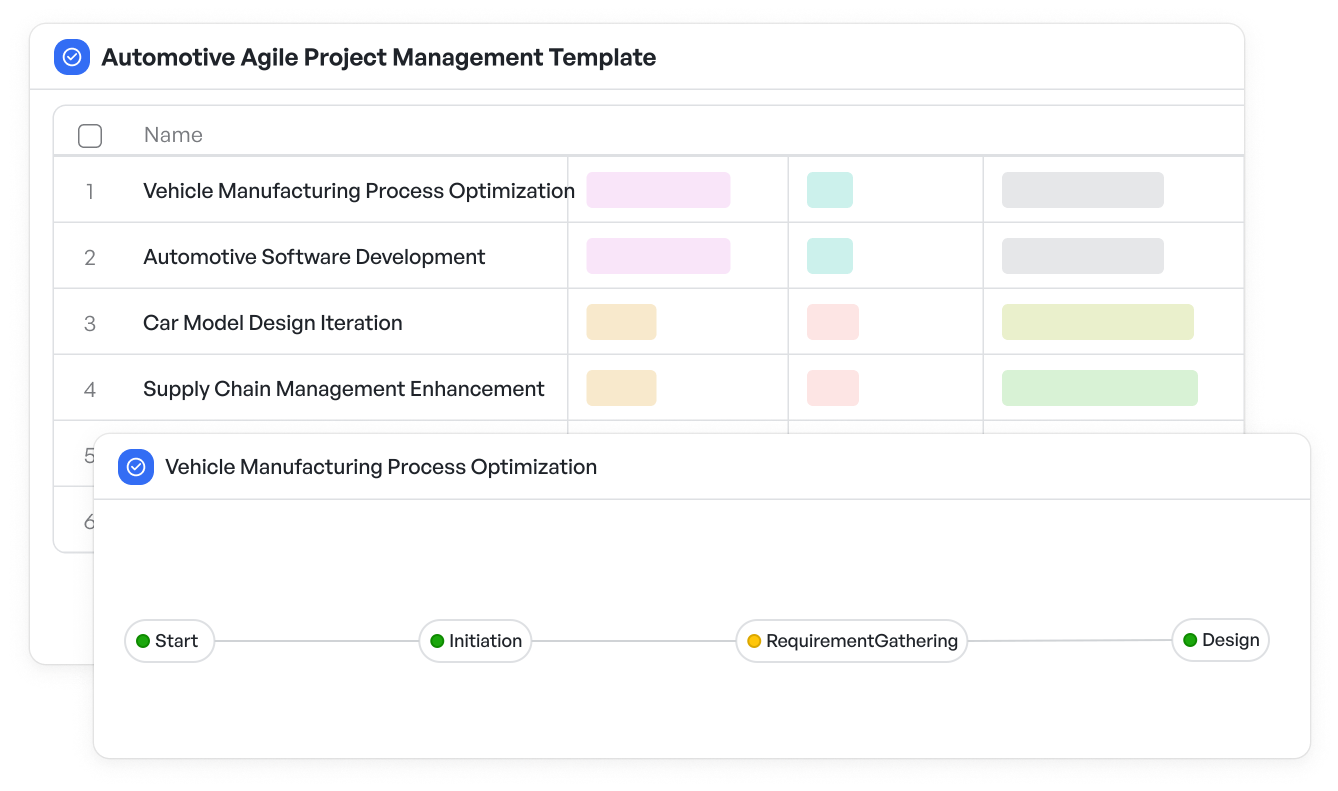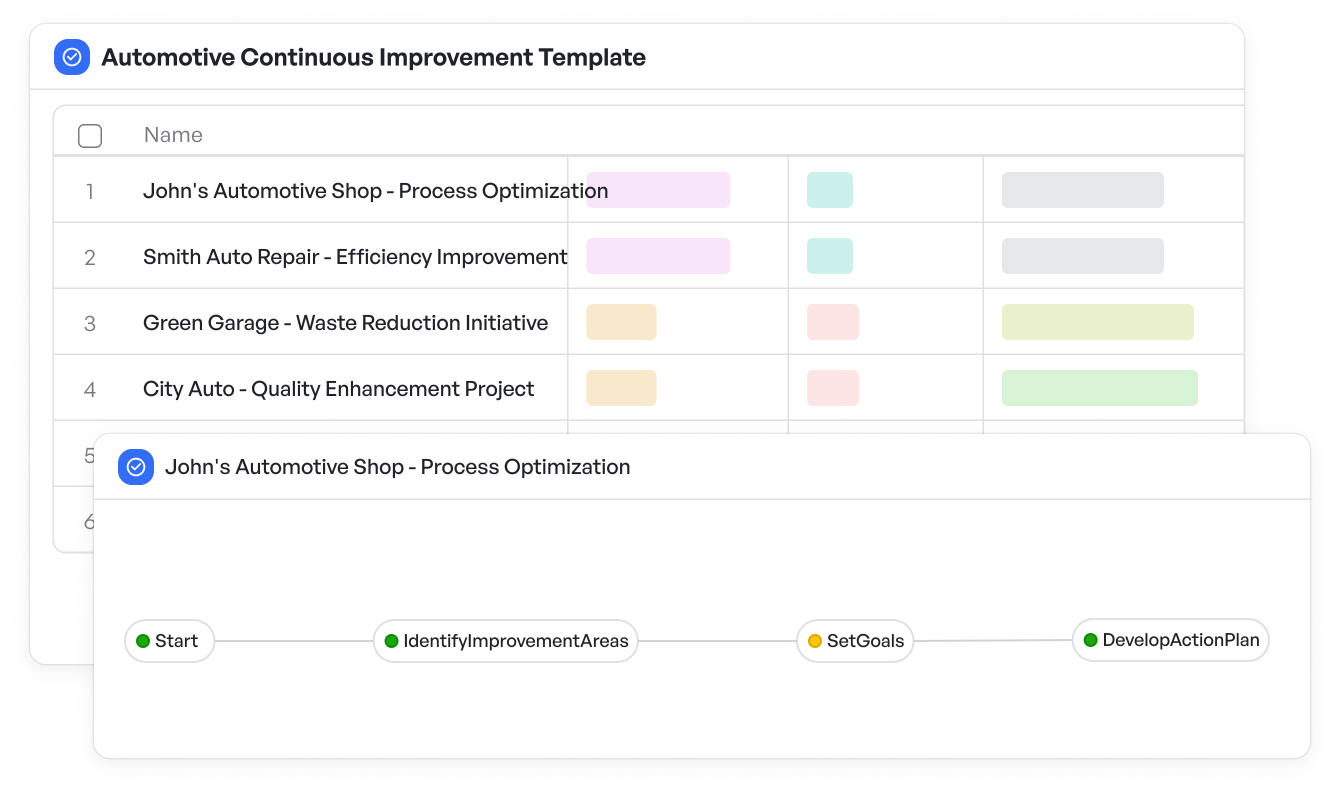How To Implement Crystal In Automotive: Streamlining Project Management With Agile Workflows

In the automotive industry, managing complex projects that involve cross-functional teams, strict compliance, and tight timelines demands a flexible yet clear project management approach.
The crystal methodology, a form of Agile, offers automotive companies a way to handle these challenges by adapting to team size and project complexity while maintaining transparency and collaboration.
This article explores how crystal in automotive projects can improve workflow clarity, team communication, and project delivery speed. We will also touch on practical ways to implement crystal principles in automotive environments, emphasizing tools that support visualized workflows and team alignment.
What is Crystal and Why Does it Matter in Automotive Projects?
Crystal is an Agile methodology focused on adaptability and efficiency. Unlike rigid frameworks, crystal recognizes that every team and project is unique. It encourages tailoring processes to fit project needs, emphasizing frequent delivery, clear communication, and reflective improvement.
In automotive projects, which often span engineering, manufacturing, software integration, and supply chain optimization, crystal helps balance flexibility with control. This ensures teams remain aligned on goals without being bogged down by overly complex procedures.
Key Benefits of Using Crystal in Automotive Projects
Applying crystal methodology within automotive projects provides several advantages:
- Adaptable workflows that fit project scale and team dynamics
- Enhanced communication through regular check-ins and visual updates
- Incremental delivery enables early detection of issues
- Focused collaboration across departments like design, production, and quality assurance.
These benefits support automotive firms in managing product development processes, compliance testing, and supplier coordination with better clarity and less overhead.
How to Enhance Cross-Functional Team Collaboration with Crystal in Automotive
Automotive projects involve diverse teams: mechanical engineers, software developers, quality testers, and suppliers. Crystal encourages lightweight processes that allow these teams to coordinate effectively without bureaucratic delays.
The emphasis on face-to-face communication (or real-time collaboration in remote setups) and regular retrospectives helps surface blockers early. Teams can adapt priorities and workflows, which reduces rework and improves project velocity.
Implementing Crystal in Automotive: Key Steps for Success
To adopt crystal successfully, automotive project managers can follow these structured steps:
1. Map Your Project Workflow Visually
Begin by creating a workflow visualization of your current process stages, starting from design, prototyping, testing, and manufacturing. This visual map helps teams clearly understand task sequences, dependencies, and responsibilities.
2. Define Team Roles and Communication Cadence
Establish clear roles and set regular standups or sync meetings tailored to team size and project needs. Crystal encourages minimizing unnecessary documentation while keeping everyone informed.
3. Prioritize Incremental Deliverables
Break down large milestones such as powertrain calibration, ADAS system integration, or infotainment module development into smaller, testable deliverables.
For instance, instead of waiting to validate an entire ECU system, start by delivering and testing individual software components like sensor data handling or controller area network (CAN) bus communication.
This approach allows teams to identify issues early, reduce downstream rework, and stay aligned across engineering, software, and validation teams.
 Automotive Agile Project Management Template for iterative, manageable milestones
Automotive Agile Project Management Template for iterative, manageable milestones4. Use Visual Workflow Tools
Adopt software tools that enable visual tracking of progress and assignments. These tools support transparency and allow every team member to see the bigger picture.
Meegle’s automation capabilities streamline routine tasks, reduce manual follow-ups, and help keep projects moving smoothly in complex automotive environments.
5. Hold Reflective Reviews and Adjust
Schedule retrospectives to discuss what’s working and what isn’t. Continuous improvement is vital in crystal and helps automotive teams maintain agility amid complexity.
 Automotive continuous improvement template for regular retrospectives
Automotive continuous improvement template for regular retrospectivesCrystal Project Management Templates for Automotive Teams
Templates designed around crystal principles simplify adoption by providing structure without rigidity. Automotive teams benefit from templates that focus on:
- Automotive Agile Project Management Template for managing Agile workflows and task tracking
- Automotive Production Scheduling Template to plan and coordinate manufacturing timelines
- Automotive Supplier Collaboration Template to improve communication with suppliers
- Automotive Quality Assurance Checklist Template to monitor compliance and standards
Such templates reduce setup time and help teams quickly align on project scope and delivery expectations. They provide a foundation adaptable to specific automotive project requirements like design validation or supply chain coordination.
 Automotive industry templates in Meegle
Automotive industry templates in MeegleOvercoming Common Challenges with Crystal in Automotive
While crystal offers flexibility, automotive teams may face challenges like:
- Resistance to change from traditional waterfall processes
- Balancing regulatory documentation with Agile minimalism
- Coordinating multiple vendors and third parties.
Addressing these requires clear communication of crystal’s benefits, training tailored to automotive contexts, and selecting tools that integrate compliance needs with Agile workflows.
Improved Automotive Project Delivery with Crystal Methodology
Crystal helps automotive teams handle complex projects with clarity and adaptability. By focusing on visual workflows, incremental delivery, and continuous collaboration, it reduces confusion and accelerates timelines.
Teams gain a better overview of progress, enabling proactive issue resolution and higher-quality outcomes.
If you want to bring these advantages to your automotive projects, consider adopting tools that facilitate crystal workflows and team visibility.
Stay fast, stay flexible—Meegle simplifies complex automotive workflows.
The world’s #1 visualized project management tool
Powered by the next gen visual workflow engineRead More
Check All BlogsStart creating impactful work today



